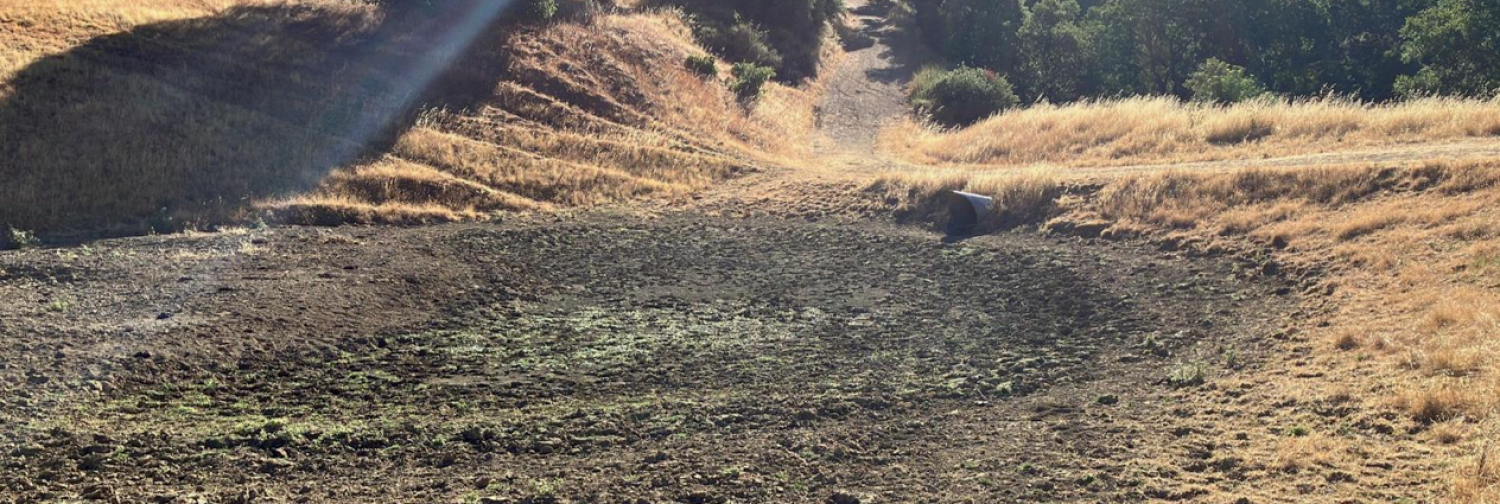How do diseases respond to extreme weather events?
Climate change is projected to influence the dynamics and distributions of many parasitic diseases of both humans and wildlife. Whether changes in drought frequency, heat waves, and flooding events will serve to increase or reduce disease depends on the differential responses of parasites, hosts, and their interactions. Available forecasts suggest that climate change will involve changes in mean temperature as well as the timing and availability of water, yet relatively little is known about how such shifts affect parasite-host relationships.
The project
Our lab is interested in identifying the mechanisms through which extreme weather events alter disease risk in wildlife hosts. To this end, we seek to understand how changes in temperature and especially water availability (e.g., drought) affect not only hosts and parasites directly but the nature of their interactions. With an emphasis on parasites in aquatic ecosystems, we are combining experimental-based approaches both in the laboratory and in mesocosms with theory to develop a more predictive framework for how climate shifts will affect disease risk by different types of parasites.

Concurrently, we are using long-term data from pond ecosystems in California to explore how changes in precipitation and temperature influence interactions between hosts and parasites. Over the last 10 years, for instance, California has experienced some of the most severe drought conditions of the past millennium, dramatically altering patterns of parasite richness, infection prevalence, and host pathology. This ‘natural experiment’ and the system’s subsequent response have provided a powerful opportunity to test hypotheses about the direct and indirect effects of drought on entire host-parasite assemblages. We are working with natural land managers to understand the implications of such extreme weather events for the conservation of sensitive aquatic hosts and how to actively enhance system resilience in the face of an increasingly unpredictable climate.
Project publications
McDevitt-Galles, T., Moss, W. E., Briggs, C. J. and P. T. J. Johnson (2022). How extreme drought events, introduced species, and disease interact to affect threatened amphibian populations. Freshwater Biology 41: 680-694. https://doi.org/10.1086/722679.
Moss, W. E., McDevitt-Galles, T., Muths, E., Bobzien, S., Purificato, J. and P. T. J. Johnson (2021). Resilience of native amphibian communities following catastrophic drought: evidence from a decade of regional-scale monitoring. Biological Conservation 263: 109352. https://doi.org/10.1016/j.biocon.2021.109352.
Paull, S. H. and P. T. J. Johnson (2018). How temperature, pond-drying, and nutrients influence parasite infection and pathology. EcoHealth 15: 396-408. https://doi.org/10.1007/s10393-018-1320-y.
Altman, K. A., Paull, S. H., Johnson, P. T. J., Golembieski, M. N., Stephens, J. P., LaFonte, B. E., and T. R. Raffel (2016). Host and parastie thermal acclimation responses depend on the stage of infection. Journal of Animal Ecology 85: 1014-2014.
Paull, S. H., Raffel, T. R., LaFonte, B. E. and P. T. J. Johnson (2015). How temperature shifts affect parasite production: Testing the roles of thermal stress and acclimation. Functional Ecology 29: 941–950.
Koprivnikar, J., Paull, S. H. and P. T. J. Johnson (2014). Combined influence of hydroperiod and parasitism on larval amphibian development. Freshwater Science 33: 941-949.
Paull, S. H. and P. T. J. Johnson (2014). Experimental warming drives a seasonal shift in the timing of host-parasite dynamics with consequences for disease risk. Ecology Letters 17: 445-453.
Rohr, J. R., Blaustein, A. R., Paull, S. H., Johnson, P. T. J., Raffel, T., and S. Young (2013). Using physiology to understand climate-driven changes in disease and their implications for conservation. Conservation Physiology 1: doi:10.1093/conphys/cot022.
Altizer, S., Ostfeld, R. S., Harvell, C. D., Johnson, P. T. J., and S. Kutz (2013). Climate change and infectious diseases: from evidence to a predictive framework. Science 341: 514-519.
Paull, S. H., LaFonte, B., and P. T. J. Johnson (2012). Temperature-driven shifts in a host-parasite interaction drive nonlinear changes in disease risk. Global Change Biology 18: 3558-3567.
Hoverman, J. T., Paull, S. H., and P. T. J. Johnson (2013). Does climate change increase the risk of disease? Analyzing published literature to detect climate–disease interactions. In Pielke, R. Sr. (ed.), Climate Vulnerability: Understanding and Addressing Threats to Essential Resources, Vol. 4., Academic Press. DOI: http://dx.doi.org/10.1016/B978-0-12-384703-4.00406-8.
Paull, S. and P. T. J. Johnson (2013). Can we predict climate-driven changes to disease dynamics? Applications for theory and management in the face of uncertainty. Wildlife Conservation in a Changing Climate (J. F. Brodie, E. Post and D. Doak, eds.). University of Chicago Press.
Blaustein, A. R., Gervasi, S. S., Johnson, P. T. J., Hoverman, J. T., Belden, L. K., Bradley, P. W. and G. Y. Xie (2012). Ecophysiology meets conservation: understanding the role of disease in amphibian population declines. Philosophical Transactions of the Royal Society, Series B 367: 1688-1707.
Rohr, J. R., Johnson, P. T. J., Paull, S. H., Raffel, T. R., Dobson, A. P., Kilpatrick, A. M., Ruiz-Moreno, D., Pascual, M. and M. B. Thomas (2011). Frontiers in climate change-disease research. Trends in Ecology and Evolution 26: 270-277.
Paull, S. and P. T. J. Johnson (2011). High temperature enhances host pathology in a snail-trematode system: possible consequences of climate change for the emergence of disease. Freshwater Biology 56: 767-778.

